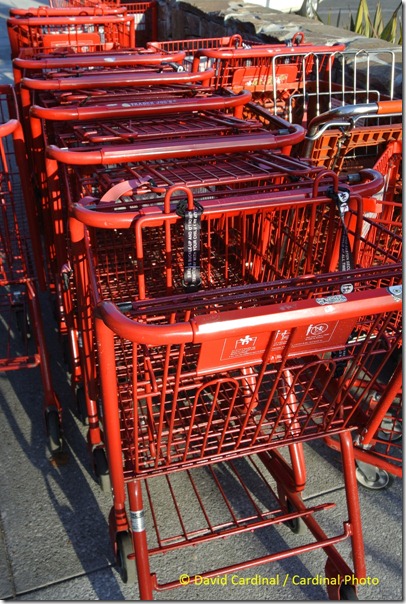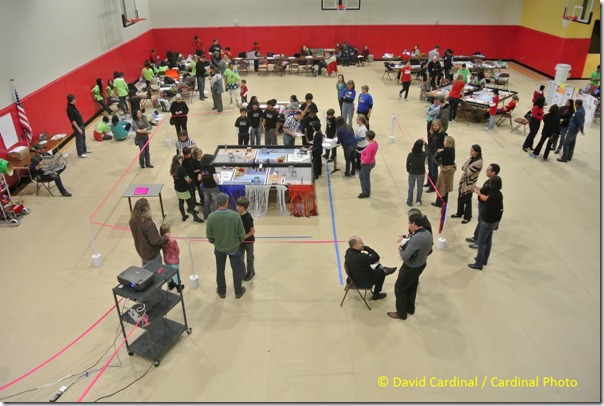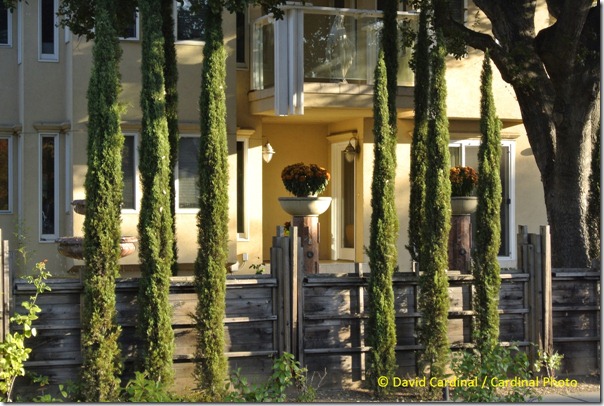- Photo Safaris
- Alaska Bears & Puffins World's best Alaskan Coastal Brown Bear photo experience. Small group size, idyllic location, deluxe lodging, and Puffins!
- Participant Guestbook & Testimonials Candid Feedback from our participants over the years from our photo safaris, tours and workshops. We don't think there is any better way to evaluate a possible trip or workshop than to find out what others thought.
- Custom Photo Tours, Safaris and Personal Instruction Over the years we've found that many of our clients & friends want to participate in one of our trips but the dates we've scheduled just don't work for them or they'd like a customized trip for their family or friends.
- Myanmar (Burma) Photo Tour Myanmar (Burma) Photo Tour December 2017 -- with Angkor Wat option
- Reviews Go hands-on
- Camera Reviews Hands-on with our favorite cameras
- Lens reviews Lenses tested
- Photo Accessories Reviews Reviews of useful Photo and Camera Accessories of interest to our readers
- Useful Tools & Gadgets Handy tools and gadgets we've found useful or essential in our work and want to share with you.
- What's In My Camera Bag The gear David Cardinal shoots with in the field and recommends, including bags and tools, and why
- Articles About photography
- Getting Started Some photography basics
- Travel photography lesson 1: Learning your camera Top skills you should learn before heading off on a trip
- Choosing a Colorspace Picking the right colorspace is essential for a proper workflow. We walk you through your options.
- Understanding Dynamic Range Understanding Dynamic Range
- Landscape Photography Tips from Yosemite Landscape Photography, It's All About Contrast
- Introduction to Shooting Raw Introduction to Raw Files and Raw Conversion by Dave Ryan
- Using Curves by Mike Russell Using Curves
- Copyright Registration Made Easy Copyright Registration Made Easy
- Guide to Image Resizing A Photographers' Guide to Image Resizing
- CCD Cleaning by Moose Peterson CCD Cleaning by Moose Peterson
- Profiling Your Printer Profiling Your Printer
- White Balance by Moose Peterson White Balance -- Are You RGB Savvy by Moose Peterson
- Photo Tips and Techniques Quick tips and pro tricks and techniques to rapidly improve your photography
- News Photo industry and related news and reviews from around the Internet, including from dpreview and CNET
- Getting Started Some photography basics
- Resources On the web
- My Camera Bag--What I Shoot With and Why The photo gear, travel equipment, clothing, bags and accessories that I shoot with and use and why.
- Datacolor Experts Blog Color gurus, including our own David Cardinal
- Amazon Affiliate Purchases made through this link help support our site and cost you absolutely nothing. Give it a try!
- Forums User to user
- Think Tank Photo Bags Intelligently designed photo bags that I love & rely on!
- Rent Lenses & Cameras Borrowlenses does a great job of providing timely services at a great price.
- Travel Insurance With the high cost of trips and possibility of medical issues abroad trip insurance is a must for peace of mind for overseas trips in particular.
- Moose Peterson's Site There isn't much that Moose doesn't know about nature and wildlife photography. You can't learn from anyone better.
- Journeys Unforgettable Africa Journeys Unforgettable -- Awesome African safari organizers. Let them know we sent you!
- Agoda International discounted hotel booking through Agoda
- Cardinal Photo Products on Zazzle A fun selection of great gift products made from a few of our favorite images.
- David Tobie's Gallery Innovative & creative art from the guy who knows more about color than nearly anyone else
- Galleries Our favorite images
Nikon 1 V1 and J1: Sexy, but are they too small for their own good?
Nikon 1 V1 and J1: Sexy, but are they too small for their own good?
Submitted by David Cardinal on Tue, 11/22/2011 - 16:02
 I really want to like the Nikon 1 cameras. They are small, cute, and fun to use. I dream of the day that I can get a fully functional D-SLR equivalent in such a light and small package. Unfortunately the Nikon 1 doesn’t quite fit the bill. To accommodate the small form factor, it features a small (1/2.7, “CX” format) sensor – smaller than either its competitors’ micro-4/3 cameras or Sony’s NEX. And being mirrorless, the photographer needs to live with the LCD for composing images on the Nikon 1 J1, or an electronic viewfinder on the V1. Neither is a great substitute, unfortunately, for a real, through-the-lens, look at the scene. But the Nikon 1 does have a lot to recommend it, and will be perfect as a weekend or vacation camera for many Nikon shooters, so I’ll layout the pros and cons to help you decide if it is the right camera for you…
I really want to like the Nikon 1 cameras. They are small, cute, and fun to use. I dream of the day that I can get a fully functional D-SLR equivalent in such a light and small package. Unfortunately the Nikon 1 doesn’t quite fit the bill. To accommodate the small form factor, it features a small (1/2.7, “CX” format) sensor – smaller than either its competitors’ micro-4/3 cameras or Sony’s NEX. And being mirrorless, the photographer needs to live with the LCD for composing images on the Nikon 1 J1, or an electronic viewfinder on the V1. Neither is a great substitute, unfortunately, for a real, through-the-lens, look at the scene. But the Nikon 1 does have a lot to recommend it, and will be perfect as a weekend or vacation camera for many Nikon shooters, so I’ll layout the pros and cons to help you decide if it is the right camera for you…
Form Factor
The first thing you notice about the Nikon 1 is how much smaller it is than a DSLR. By ditching the prism and mirror system, the camera can be made smaller mechanically, and by using a much smaller sensor (about half the width and height of the typical “DX'” Nikon DSLR sensor, the new size has been christened “CX.” You can read and compare sensor sizes online). Unfortunately, unless you pony up for a separate “pancake” style fixed-focus lens, once you put either of the kit lenses – the 10-30mm or 30-110mm models – on the Nikon 1 it is no longer pocket size. The 10-30 does have a clever retraction feature, to minimize the length of the camera’s “snout,” but even with that the camera is over 2” from front to back. The retractable lens also makes the camera a little slower to use if you’ve forgotten to unlock the lens before turning it on.

These shopping carts gleam red in the sun,
showing how well the Nikon 1 can reproduce colors.
Un-retouched JPEG from Nikon 1 J1
This size makes the Nikon 1 impractical as a true replacement for the camera you always have with you – at least for those of us for whom that means a shirt or pants pocket. With the 10-30mm lens it’ll do okay in a jacket pocket, but if you are going to carry around the camera, two lenses, and matching flash (the higher end V1 adds many bells and whistles, including an electronic viewfinder, but removes the on board flash – making the speedlight a necessity) you’re going to need a small camera bag for it.
Image Quality

Daytime shots like this one came out crisp and clear, although the clouds caused the Nikon 1
to render this image too cool for my tastes. Fortunately the Nikon 1 supports Raw+JPEG,
so I could always rebalance the Raw file in Photoshop for my preferred White Balance.
There is no question Nikon has done an amazing job of getting great images out of a tiny sensor. Working with Aptina they’ve produced a relatively low noise, high performance camera that is smaller than a pack of cigarettes (until you add a lens). In good light the images are crisp, clear, and have excellent color. Unless you are worried about selling them professionally as stock images, you’re unlikely to find much to grouse about. In low light, as you’d expect, the small sensor size begins to show through In this ISO 800 image of an indoor robotics competition, you can see the beginnings of serious noise issues.
In this ISO 800 image of an indoor robotics competition, you can see the beginnings of serious noise issues.
The image is still fine for the web or small prints, but not really suitable for a large, display print.
Shutter speed was a measly 1/15s, so blur isn’t the camera’s fault, but the noise is.

In this image of Moose Peterson speaking at Google, the camera bumped its ISO to 1250,
and the noise is even more pronounced. Once again the shutter speed was reduced to 1/15s.
With my D7000 I could have shot this scene at 1600 ISO to get 1/25s, or with my D700 I could
have shot it at ISO 3200 to get 1/50s, both with lower noise. But of course they are both larger
and more expensive cameras.
Camera Handling and Performance
My review unit is a J1, so I needed to rely on the LCD for viewing and focusing. The biggest problem is that in most modes the LCD (and presumably the EVF on the V1) “locked up” showing the previous image until it wrote to the SD card. There is one really cool workaround – if you hold the shutter down solid the camera can rip off 5fps , but as soon as you let up the images there is a noticeable pause before you can shoot again. In a special 10fps mode the camera takes over most of the controls and will rip along without pause – capturing over a dozen frames for the J1 and several times that for the V1.
The AF is great when compared to a point and shoot, although similar to other 2011 vintage mirrorless cameras like the Olympus E-P3 – all of which are noticeably faster than previous generations of non-SLR bodies.
Available Lenses
At least until Nikon releases its “F-mount” adapter, you have a very limited choice of lenses for the Nikon 1. You can purchase it with one or both of Nikon’s excellent “kit” lenses (the 10-30mm, effectively 27-80mm, and the 30-110mm, effectively 80-300mm. Or there is a cute, “pancake,” 10mm f/2.8 lens – which truly does make the Nikon 1 a walkaround camera.
Flash Performance
The pop-up flash in the J1 is respectable for indoor portraits. Below are two images shot without and with the pop-up flash – both unretouched JPEGs shot with the camera on full automatic.


You can see that the flash no only provides lighting on the subject in the center of the frame, but adds color and clarity to the tablecloth in the front of the image, and even has some effect on the background.
Should you buy a Nikon 1? Which one?
 That’s a hard one to answer here. If you are desperate to get rid of DSLR gear because of the size and weight and want the next best thing, then a mirrorless camera is the way to go. Personally, for anyone not addicted to Nikon, I’d seriously consider the Olympus E-P3 PEN camera. Prior to the recent troubles at Olympus, I would have said that the Olympus E-P3 (“Pen 3”) was a no-brainer in this category. But if you’re worried about the future of Olympus, or prefer to stick with Nikon, then the Nikon 1 will fit the bill. It is smaller than the Sony competitor (by the time you put a zoom lens on the Sony NEX, it is just about the size of an entry level DSLR) and at least as quick as the Olympus and other micro-4/3 cameras. The Nikon 1 J1 will set you back less than $600 at B&H with the 10-30mm kit lens. For the added features of the Nikon 1 V1 you’ll spend $850 for a similar kit at B&H.
That’s a hard one to answer here. If you are desperate to get rid of DSLR gear because of the size and weight and want the next best thing, then a mirrorless camera is the way to go. Personally, for anyone not addicted to Nikon, I’d seriously consider the Olympus E-P3 PEN camera. Prior to the recent troubles at Olympus, I would have said that the Olympus E-P3 (“Pen 3”) was a no-brainer in this category. But if you’re worried about the future of Olympus, or prefer to stick with Nikon, then the Nikon 1 will fit the bill. It is smaller than the Sony competitor (by the time you put a zoom lens on the Sony NEX, it is just about the size of an entry level DSLR) and at least as quick as the Olympus and other micro-4/3 cameras. The Nikon 1 J1 will set you back less than $600 at B&H with the 10-30mm kit lens. For the added features of the Nikon 1 V1 you’ll spend $850 for a similar kit at B&H.
If you want a state of the art point and shoot, then you’re better off with the Nikon P7100, Lumix LX5, or Canon Powershot G12. They’ll all keep your life a little simpler by avoiding the need for multiple lenses and a camera bag. But if you’ve got a point and shoot and an SLR and want to have a fun camera for vacation, weekends, or just goofing off with, then the Nikon 1 will definitely fit the bill if you can afford the $1K price tag for a decent kit. If you’re used to a DSLR I’d definitely opt for the viewfinder model (Nikon 1 V1), but remember you’ll also need a flash. If you’re used to shooting with an LCD, then the less expensive Nikon 1 J1 will fit the bill nicely, providing a great all in one solution with its pop-up flash.

Outdoor scene showing the Nikon 1’s ability to convey detail, although it didn’t have enough DOF
to pull in both the foreground and the background sharply.
Related articles
- Log in to post comments


